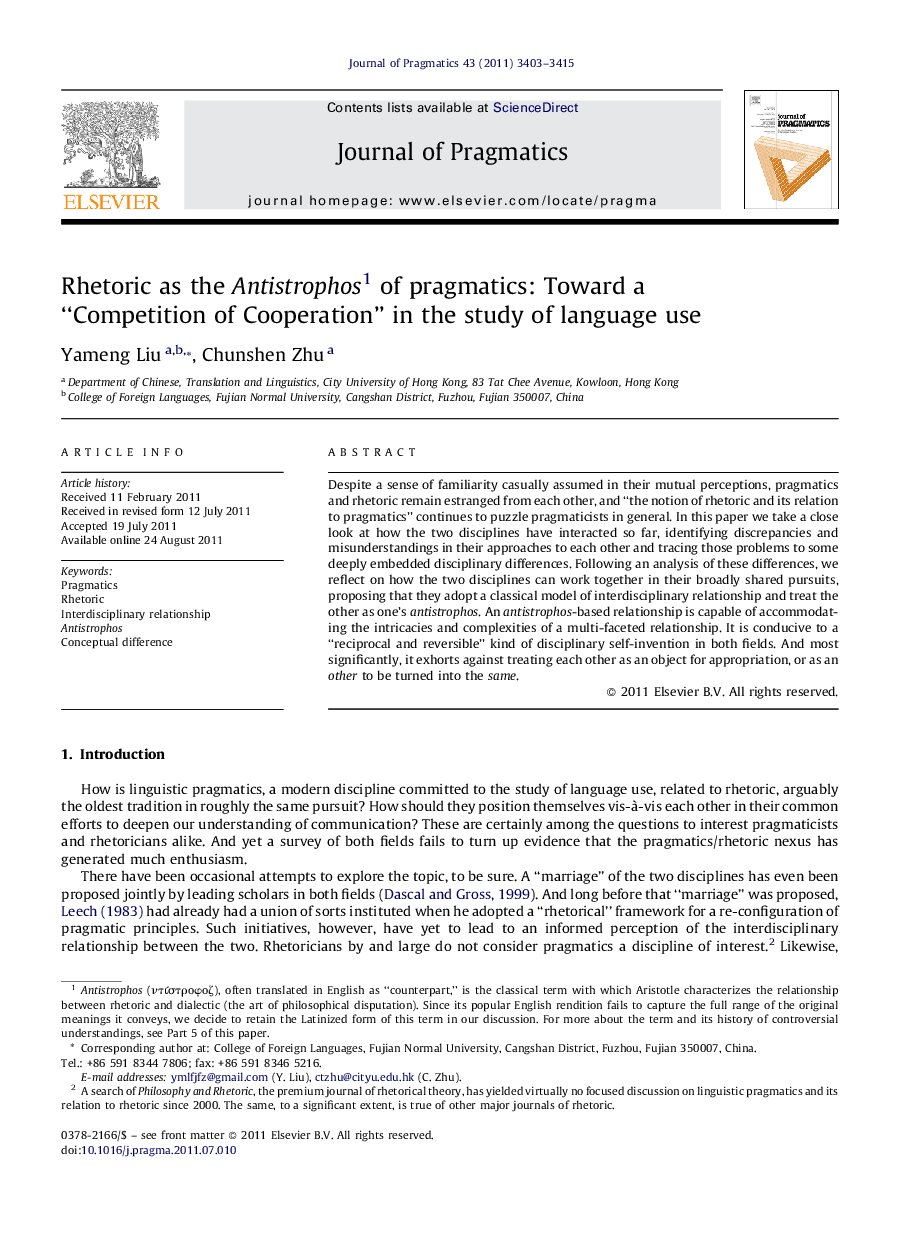| Article ID | Journal | Published Year | Pages | File Type |
|---|---|---|---|---|
| 933109 | Journal of Pragmatics | 2011 | 13 Pages |
Despite a sense of familiarity casually assumed in their mutual perceptions, pragmatics and rhetoric remain estranged from each other, and “the notion of rhetoric and its relation to pragmatics” continues to puzzle pragmaticists in general. In this paper we take a close look at how the two disciplines have interacted so far, identifying discrepancies and misunderstandings in their approaches to each other and tracing those problems to some deeply embedded disciplinary differences. Following an analysis of these differences, we reflect on how the two disciplines can work together in their broadly shared pursuits, proposing that they adopt a classical model of interdisciplinary relationship and treat the other as one's antistrophos. An antistrophos-based relationship is capable of accommodating the intricacies and complexities of a multi-faceted relationship. It is conducive to a “reciprocal and reversible” kind of disciplinary self-invention in both fields. And most significantly, it exhorts against treating each other as an object for appropriation, or as an other to be turned into the same.
► The current mutual assumptions of pragmatics and rhetoric are problematic. ► Rhetorical conception of discourse is informed with a Principle of Non-cooperation. ► Comparing this Principle with CP sheds new lights on the pragmatics/rhetoric nexus. ► The two disciplines should base their relation on the model of antistrophos.
